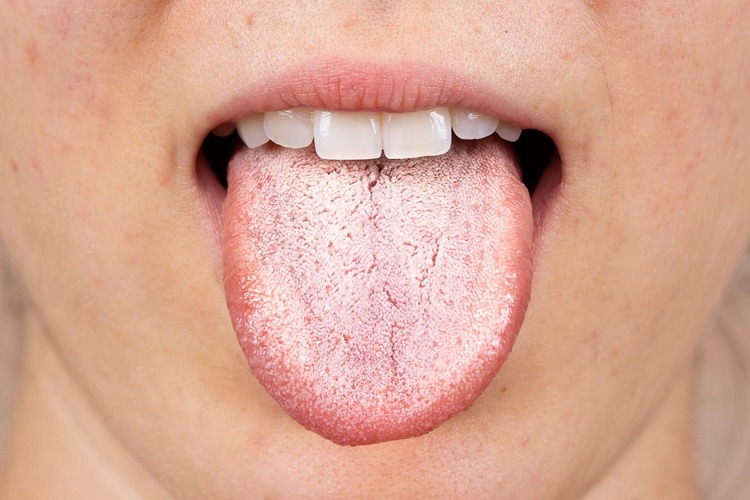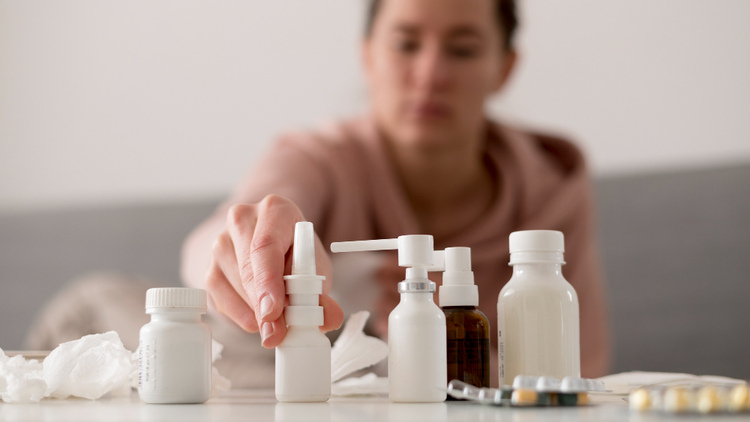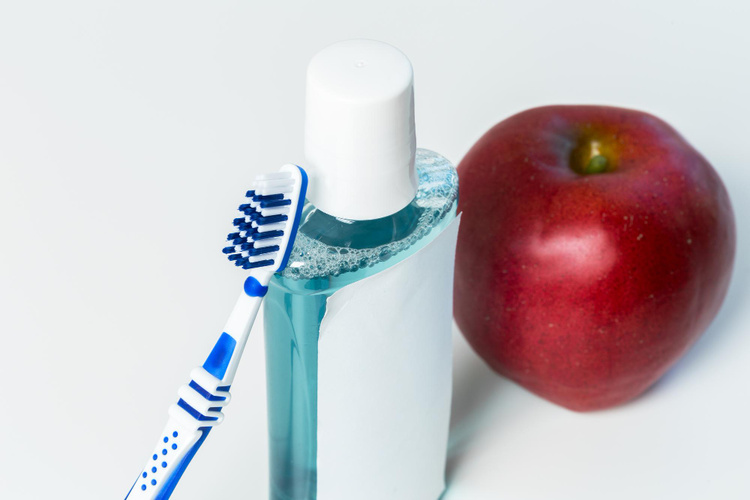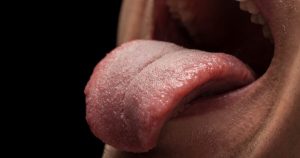Noticed white patches in your mouth that make eating uncomfortable? You could be experiencing oral thrush, a common and treatable fungal infection. For accurate diagnosis, regular comprehensive oral checkups with advanced tools can catch issues early, keeping your smile healthy. This blog explores what oral thrush is, its causes, symptoms, treatments, prevention tips, and answers to common questions. Read on to learn how to recognize, treat, and prevent oral thrush for a confident, healthy smile!
How to Diagnose Oral Thrush
Diagnosing oral thrush accurately is key to distinguishing it from conditions like leukoplakia or bacterial infections. Understanding its nature and symptoms helps you know when to seek professional help. While self-awareness is useful, a healthcare professional must confirm the diagnosis through examination.
What Is Oral Thrush?
Oral thrush, medically known as Oral Candidiasis, is a fungal infection in the mouth caused by an overgrowth of the yeast Candida albicans. This yeast is naturally present in small amounts in the mouth, throat, digestive tract, and on the skin, where it usually doesn’t cause issues. However, disruptions in the balance of bacteria and yeast due to factors like a weakened immune system, antibiotic use, or certain health conditions can lead to rapid Candida growth, resulting in Oral thrush, one of the common dental problems.
While oral thrush is generally harmless and treatable, it can cause discomfort, such as soreness or difficulty eating. In untreated cases, especially among individuals with compromised immunity (like those with HIV/AIDS, diabetes, or undergoing chemotherapy), the infection may spread to the esophagus or other parts of the body, leading to more serious complications.

Common Symptoms of Oral Thrush
The symptoms of oral thrush can vary in intensity but often appear suddenly and may persist if not addressed. Here’s a breakdown of the most typical signs to watch for, explained in a way that makes them easier to identify in everyday life:
- White Patches: These are the hallmark of oral thrush; creamy white or yellowish lesions that resemble cottage cheese on the tongue, inner cheeks, gums, tonsils, or roof of the mouth. They may be painful, and scraping them off can reveal red, raw tissue underneath that might bleed slightly.
- Redness or Inflammation: Affected areas in the mouth can become red, swollen, and irritated, often accompanied by a burning sensation that makes eating spicy or acidic foods uncomfortable. These symptoms are sometimes mistaken for conditions like gingivitis.
- Difficulty Swallowing: In more severe cases, the infection can extend to the throat or esophagus, causing pain or discomfort when swallowing (known as odynophagia). This is particularly common if the thrush has spread.
- Altered Sense of Taste: You might experience a reduced ability to taste food or notice a persistent, unpleasant, cotton-like, or metallic taste in your mouth, which can affect your appetite.
- Cracking at the Corners of the Mouth: Also called angular cheilitis, this involves dryness, redness, or painful cracks around the lips, which can occur alongside thrush due to moisture buildup or irritation.
Note: In infants, children, or those with weakened immune systems, symptoms can be more pronounced and may include fussiness during feeding or a reluctance to eat. If you notice these signs, especially if they don’t improve with basic oral care, consult a dentist for professional family dental care to get an early detection through a simple visual exam or lab test.
Best Treatment Options for Oral Thrush
Treating oral thrush targets Candida albicans overgrowth and underlying causes using medical treatments and supportive home remedies to relieve symptoms and prevent recurrence. This section covers professional options and complementary strategies. Always consult a healthcare provider before starting.
Medical Treatments and Antifungal Options
Antifungal medications are the primary treatment for oral thrush, targeting Candida to restore oral health. They vary by infection severity and patient condition. Common options include:
Antifungal Mouthwashes. Nystatin, a commonly prescribed antifungal treatment, is used as a liquid rinse that you swish around your mouth and then swallow or spit out, depending on the doctor’s instructions. It directly targets the fungus on the mucous membranes.
Oral Tablets or Capsules. For more severe infections or cases resistant to topical treatments, systemic antifungals like fluconazole (Diflucan) are prescribed. These are taken orally and work throughout the body to combat the infection.
Lozenges. Clotrimazole lozenges dissolve slowly in the mouth, delivering antifungal medication directly to the affected areas. They’re effective for mild to moderate cases and are easy to use.
Gels or Creams. Miconazole gel or cream can be applied directly to lesions in the mouth or to cracked corners of the lips (angular cheilitis). It’s particularly useful for localized infections.
Systemic Treatment. In severe cases, particularly in immunocompromised individuals (e.g., those with HIV/AIDS, cancer, or uncontrolled diabetes), stronger antifungal medications like itraconazole or amphotericin B may be administered orally or, in rare cases, intravenously. These are reserved for infections that have spread beyond the mouth or are resistant to other treatments.

Read more: Prescription Drugs from Dentists: What You Need to Know
Take Control of Your Oral Health Today
Don’t let oral thrush linger and disrupt your comfort; early action is key to preventing complications. At Pape Dental Centre, our expert team offers precise diagnostics and tailored solutions to restore your oral balance. Schedule your consultation now and step toward a healthier, thrush-free smile!
Key Considerations. The typical treatment duration is 7 to 14 days, and completing the full course is crucial to preventing the infection from returning. If symptoms persist after treatment, your doctor may recommend further tests to check for underlying conditions like diabetes, immune deficiencies, or other infections that could be contributing to recurrent thrush. For individuals using inhaled corticosteroids (e.g., for asthma), rinsing the mouth after each use can reduce the risk of developing thrush.
At Pape Dental Centre, we use advanced antifungal treatments to effectively combat Oral Thrush. One of our patients, who struggled with a weakened immune system, shared:
‘Dr. Shahrbandi’s team diagnosed my Oral Thrush quickly and provided a non-invasive antifungal treatment that cleared my infection without pain. I feel so much better now!’
If you’re experiencing symptoms, contact our restorative dentistry services today for expert care.
At-Home Remedies for Oral Thrush
Certain at-home remedies can support medical treatments for oral thrush by easing symptoms, but they should not replace prescribed antifungals, especially for severe cases or immunocompromised individuals. Always consult a healthcare provider before trying these. Options include:
| Home Remedy | Instructions and Benefits |
| Saltwater Rinse | Rinse with 1 tsp salt in warm water daily to reduce fungal growth. |
| Probiotic Yogurt | Eat unsweetened yogurt with live cultures to balance oral bacteria. |
| Coconut Oil | Swish or apply virgin coconut oil sparingly; consult a doctor first. |
| Apple Cider Vinegar Rinse | Rinse with 1 tbsp vinegar in water to inhibit Candida. Avoid with sores. |
| Oral Hygiene Practices | Brush twice daily, floss, replace toothbrush post-treatment, clean dentures daily. |
Important Note: These remedies are supplementary. Seek medical advice if symptoms persist or worsen, especially for severe cases or immunocompromised individuals.
Causes and Risk Factors of Oral Thrush
Oral thrush is typically caused by an overgrowth of the yeast Candida albicans, which is naturally present in the mouth and body. Certain conditions disrupt the microbial balance, leading to its excessive growth. Below are the key causes and risk factors:
- Weakened Immune System: According to the Mayo Clinic reports, oral thrush often affects individuals with weakened immune systems. Individuals with conditions like HIV/AIDS, cancer, or diabetes, or those undergoing chemotherapy or radiation, are at higher risk due to reduced immune defenses.
- Antibiotic Use: Antibiotics can kill beneficial bacteria in the mouth, disrupting the microbial balance and allowing Candida to thrive.
- Corticosteroid Medications: Inhaled steroids (e.g., for asthma) or oral corticosteroids increase the risk by altering the oral environment.
- Dry Mouth: Reduced saliva production, caused by medications or conditions like Sjögren’s syndrome, creates a favorable environment for fungal growth.
- Dentures: Poorly cleaned dentures can harbor Candida, promoting infection.
- Poor Nutrition: Deficiencies in vitamins (e.g., B12 or iron) or a high-sugar diet can encourage yeast overgrowth.
- Age: Infants and older adults are more susceptible due to weaker immune systems or hormonal changes.
- Smoking: Tobacco use can disrupt the oral microbial balance, increasing the likelihood of thrush.
Prevention Tips to Avoid Oral Thrush
Maintaining excellent oral hygiene is key to preventing oral thrush. Brushing your teeth twice daily and flossing regularly removes plaque and bacteria that can lead to fungal growth. Replacing your toothbrush after treating thrush prevents re-infection, while daily denture cleaning and removing them at night stops Candida buildup.
Read more: 6 Oral Hygiene Tools You Need for Daily Oral Care
Rinsing your mouth with water after using inhaled corticosteroids, like those for asthma, reduces fungal growth risk. Managing conditions such as diabetes with proper diet and medication strengthens your immune system to fight off infections. Drinking plenty of water also prevents dry mouth, which can encourage yeast growth.
Eating unsweetened yogurt with live cultures or taking probiotic supplements supports a healthy balance of oral bacteria. A low-sugar diet helps, as sugar fuels Candida growth. Quitting smoking reduces disruption of the oral microbial balance, lowering infection risk. Regular dental checkups, combined with best practices for daily oral care, ensure early detection of oral health issues, keeping your smile healthy.

Your Path to a Healthier Smile with Oral Thrush Care
Managing oral thrush effectively starts with understanding its causes, recognizing symptoms, and seeking timely treatment to restore oral health. With proper medical care and preventive habits, you can keep your smile healthy and free from discomfort.
Visit Pape Dental Centre in Danforth Village to access expert dental care tailored to your needs. From routine cleanings to advanced treatments, our compassionate team is here to ensure your oral health shines.
FAQ
How to know if you have oral thrush?
Look for creamy white patches on the tongue, inner cheeks, or gums, often with soreness, a burning sensation, or difficulty swallowing. Consult a doctor for confirmation.
How do you treat thrush in the mouth?
Antifungal medications like nystatin mouthwash, fluconazole tablets, or clotrimazole lozenges are prescribed for 7–14 days. Complete the full course and consult a doctor.
Can you test yourself for oral thrush?
You can’t reliably self-diagnose. A healthcare provider confirms it through a visual exam or lab test of mouth scrapings. Seek professional evaluation.
What can be mistaken for oral thrush in the mouth?
Conditions like leukoplakia, lichen planus, bacterial infections, or mouth ulcers can mimic thrush. A doctor’s exam is needed to differentiate.
Have questions about oral thrush or personal experiences to share? Drop a comment below to ask, clarify doubts, or tell us about your journey; we’d love to hear from you!

